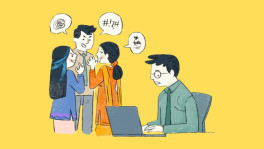5 central bank unknowns that will shape markets in 2022

Covid has thrown traditional macroeconomics out of its comfort zone.
Last week's policy pronouncements from the Federal Reserve, the Bank of England, the Reserve Bank of Australia and even the European Central Bank revealed the latest surprise — a wide disconnect between markets' rate expectations and central banks' guidance across major currencies. The real "taper shock" came not with the ending of the biggest concerted monetary expansion in history, but with a "tapering" of market confidence in what the future may look like.
Now markets are struggling with two fundamental issues: the sense that economies can't get back to where they were before the pandemic and an inability to forecast what lies ahead.
This echoes the message that central banks shared last week — that there is sizable uncertainty about future output, employment and inflation, and that these "unknowables" will be consequential for both economic trajectories and for market rates and returns. The result, as the Chinese proverb goes, is a shared policy desire to "cross the river by feeling the stones."
There are no less than five major areas of "unknowable uncertainty" that remarks from Fed Chair Jerome Powell, BOE Governor Andrew Bailey, ECB President Christine Lagarde and RBA Governor Philip Lowe have identified. These are:
When the pandemic will end. Waves of Covid variants have upended central banks' ability to predict the duration of supply-demand imbalances. At the same time, there's increased anxiety that the longer these imbalances persist, the greater the risk of secondary wage-price inflation, which would necessitate policy intervention in the shape of faster stimulus withdrawal and inverted yield curves in 2022. The more-tempered-than-tapered signaling on future rate rises shows this is an outcome policy makers are keen to avoid.
Future growth. The structural legacy of the pandemic raises questions about future trend growth and economies' capacity for sustained, non-inflationary expansion. Although higher-than-anticipated labor costs are still in line with past productivity gains, the net effects of pandemic-induced advances in digital business models and global supply infrastructure will take years to assess. In other words, there's still a long way to go before we see where the new normal for economic productivity lies, and whether wage gains through the pandemic are, indeed, inflationary.
The energy price shock. The surge in energy prices has highlighted the tension between the international transition to low-carbon economic models and the resilience of traditional supply networks. The potential for structurally higher future energy costs poses risks to both future growth and inflation, by lowering the real purchasing power of consumers and future demand while pushing up production costs. It has also reminded economists and markets of the limitations of monetary policy to address short-term supply-demand imbalances, especially when these are triggered by global structural disruptions.
Inflation is transitory but not short-lived. Central bank chiefs have been at pains to address market inflation anxiety by qualifying what "transitory" means in analyses of elevated inflation readings. Policy makers expect that widespread port congestion, shipping delays and supply bottlenecks — all of which have marred economies' capacity to satisfy consumer demand for goods — cannot last indefinitely. But they admit that there's no quick logistical fix to the disruptions either.
What's more, market pressures on companies to address supply chain resilience — from on-shoring capacity to abandoning just-in-time inventory models — mean that some of the historic benefits from globalization that have kept consumer costs low may be permanently lost after the pandemic. This creates considerable uncertainty about the future balance between growth and inflation, and therefore also about the distribution of welfare gains between employers and workers, consumers and producers, and creditors and borrowers in the post-Covid recovery.
The clear message of the last week is that central banks are not keen to play arbiter of the long-term social legacy of Covid at this stage.
Labor supply. The single biggest unknowable variable concerning central banks is the evolution of labor markets after Covid. The long-term supply of labor holds the key to policy makers' thinking about the degree of capacity in economies and the risk of a prolonged period of high consumer prices affecting worker pricing power and company wage- and price-setting behavior.
This uncertainty has united the Fed, the BOE, the ECB and the RBA in making a future policy rates lift-off conditional not on top-line consumer price readings, but on behavior — on wages moving higher in markets where demand for workers and skills continuously outstrips supply, as that would lead to stickier future inflation.
Where does this leave us? For now, central banks' willingness to put up a wall of cash will help insulate markets from the unpleasant arithmetic of trying to predict the unpredictable. By keeping market rates below the rate of inflation but also moving higher — i.e., by sustaining negative real rates in an ongoing expansion driven by excess demand — central banks hope to thread the needle around labor supply uncertainty while hedging market anxiety about inflation and keeping the pandemic legacy of elevated fiscal debt sustainable.
Yet, none of these issues are in the hands of monetary policy to resolve or predict. This makes the calm among markets all the more fascinating. Here's hoping that the ample central bank liquidity doesn't wear off too soon.
Lena Komileva is managing partner and chief economist at G+ Economics, an international market research and economic intelligence consultancy based in London.
Disclaimer: This article first appeared on Bloomberg, and is published by special syndication arrangement


 Keep updated, follow The Business Standard's Google news channel
Keep updated, follow The Business Standard's Google news channel
















